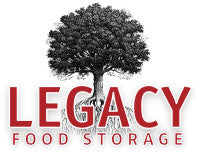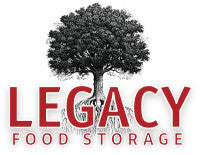
Identifying Potential Hidden Customer Loss
Everyone’s got an excuse why things go wrong, but whether you’re a small company or a large one, customers don’t care. They need someone to help them and deliver. In business, we plan for emergencies that we can control, such as technology issues and data corruption, but perhaps the most impactful are those that affect your customers and staff. When staff is unavailable or unable to manage the capacity placed upon them, customers walk. Some say that this is the most complicated issue to plan for; capacity planning is an art.
Everyone has been in this situation: you call a local company needing to make a purchase quickly. Perhaps it's the tire shop, or you need to take your car to the mechanic, or maybe you're just trying to find out if a product is in stock. You waited until they should be open and call, but the phone rings and rings. No one answers, or it rolls over to voicemail. Perhaps you try a few more times over the next 15 minutes, but out of frustration, you call another company. That company just lost a sale and maybe a customer for life because no one was available to answer the phone.
Although it may be felt more acutely by smaller businesses, larger companies are not immune. Often having to meet the requirements of regulations, service level agreements (SLAs), and other contractual obligations, larger companies are expected to have capacity plans. For example, would you expect a bank to be able to process transactions regardless of a local branch's inability to open for some reason? If that bank’s call center had a sudden drop in available staff, would you expect them to be able to route calls to other available staff?
This is why staff capacity planning is vital in today's business world. It is another form of resiliency planning, which is commonly overlooked.
Understanding your capacity needs
Similar to the capacity of your technology systems, part of your planning involves breaking down acceptable staffing levels to accomplish your daily work. Key to this is to break down your business functions, just as you did for your Business Impact Analysis (BIA), and chart them to the hours of operation, including both customer-interfacing hours and after-hours hours, if services or functions are expected to be performed outside of customer-interfacing hours.
The end product should include a matrix of staff required at three levels: minimal, ideal, and maximum, for these services. From this output, we want to focus on the minimal staffing requirements for your customer-facing and required business functions/services.
Requirements, SLAs, and regulations
Businesses must also consider the basis of the requirements placed upon them and understand that some forethought could help eliminate the risks. Is your company expected to answer the phone, reply to confirm an order, or perform some other business function/service identified in your capacity matrix? Perhaps it would be nice to have, but not required? Contracted items may have SLAs, which are a necessary level of service, response time, or product delivery. However, the actual cost to meet the SLA may be more than the impact at times. Regulations often have specific requirements and severe consequences for non-compliance set by a government agency.
Understanding the source of these may also aid in your planning and solution development.
Enterprise footprint
Your enterprise footprint will dictate the solution options available to you. A large, multi-region, or international company could easily have call centers that overlap staffing, ensuring someone is always available to answer customers' calls. Likewise, if a regional emergency were to impact a call center, staffing could be adjusted to allow employees to stay late or come in early to help cover the affected staff.
A smaller company may need to consider more creative solutions, such as an answering service, for after-hours, which would pick up calls when not answered after a predetermined number of rings, during specific hours.
The key is that, unless you plan for it in advance, it is more challenging to create and implement when needed.
Cross training
Regardless of the company size, cross-training staff can be one of the simplest and cost-effective solutions. Whether it is the duties of other employees at a single facility or the duties performed at other facilities, cross-training can overcome many capacity staffing challenges.
A very simplistic example of cross-training might be when the phones are ringing off the hook at the tire shop. Having a service tech trained on your phone system and customer service process allows them to step up and attend to those customers waiting.
A customer called the tire shop, knowing it was snowing hard all night, but someone answered.
Employee: Hello, Joe’s Tires. Can I help you?
Customer: I was hoping someone would answer.
Employee: Well, we are running on a two-hour delay, but we know customers need help now, so let me see what I can do to get things started.
This solution kept the customer from going elsewhere, set the expectations under the weather impact, and raised the reputation of Joe’s Tires as a company that is available and cares.
One company I worked for printed specialty items for the financial industry in large volumes. They printed everything from investment material, credit and debit cards, NSF letters, and much more. Each item requires special equipment and training on that equipment. We had multiple sites with similar equipment, although not identical equipment. Part of our plan, besides configuring the different equipment from one site to another, was to ensure staff knew how to print these items. We would conduct capacity tests at partnering sites, where each site would run print jobs over the third shift for a few days to simulate a site being down and ensure that all SLAs had been met.
Outcome
Both examples of planning to manage capacity and meet your customers’ needs demonstrate how some foresight can pay off and keep your customers happy. The caller to the tire shop may have experienced a slight delay, but they did receive a response. Likewise, we planned to print at a capacity of 65% of our maximum throughput. Knowing that, on average, the capacity would be met.
In summary, there are multiple reasons why businesses need to plan to deliver, regardless of the reason for the outage. Part of this is planning for staff availability to maintain a level of acceptable services. Your company's ability to plan for staffing capacity will make the difference between being a company that grows through tough times and one that struggles.
Next month, I plan to review a list of 25 recovery statistics that prove every business needs a plan, but I will take a different approach to the evidence presented in this list.
James Knox is a resiliency expert with an innovative spirit who thrives when building meaningful solutions to various daily problems in the corporate world. He is an avid outdoorsman and loves extreme rock crawling, fishing, and hunting. As a survivalist, James has learned from necessity how to prepare for life’s bumps and thrive with practical and sensible solutions, supporting his family's self-sustaining lifestyle.
Tags
- All
- 25 year food
- 25 year shelf life food
- 72 hour kit
- Best food storage types
- Best long-term food storage
- Blizzard preparedness
- Budgeting
- canning
- Certified GMO-free Emergency foods
- Certified GMO-free foods
- Coffee
- Comparison of emergency food methods
- Composting tips
- Dangers of genetically modified foods
- dehydrated food
- Edible Wild Plants
- emergcy preparedness
- Emergency Cooking
- Emergency Food
- Emergency food Christmas gifts
- emergency food storage
- Emergency Food Supply
- Emergency food supply recommendations
- Emergency Planning
- Emergency Preparedness
- Emergency preparedness advice
- emergency preparednesss
- Emergency Supplies
- Emergency supplies checklist
- Emergency Survival
- emergency survival gear
- Emergency survival kit checklist
- Emergency Survival skills
- exercise
- Family emergency preparedness
- Family emergency preparedness plan
- Family Preparedness
- Food Storage
- Food storage 25 year shelf life
- Food storage amounts
- Food storage Christmas
- Food storage containers long term
- Food Storage Secrets
- Food storage serving size
- Food storage types compared
- freeze dried food
- Freeze dried food storage
- freeze dried meats
- Freeze-dried emergency food storage
- Fruit Trees
- Gardening
- Getting Started
- Gluten-free food Storage
- Gourmet emergency food
- Healthy food storage
- How much emergency food to store
- Improved emergency preparedness
- Jared Markin
- Jared Matkin
- Legacy Premium
- Lessons learned from Hurricane Sandy
- Lessons learned from natural disasters
- long-term food storage
- Long-term Food Storage Guidelines
- Long-term Food Storage tips
- Long-term water storage
- Mental Emergency Preparedness
- Mental toughness
- Money-saving tips
- Natural disaster planning
- Natural Disasters
- Perfect Christmas gifts
- Pet Emergency preparedness checklist
- Pet Emergency preparedness kit
- Pet Emergency Survival tips
- Pets and Emergency Preparedness
- Plant Foraging
- portable solar panels
- portable solar power
- portable water filters
- protein drinks
- Risk of genetic modification
- Seed saving and storage
- Seed saving guide
- Self-reliance
- Self-reliant practices
- Shelf Life
- Solar Cooking
- Solar Ovens
- Special Dietary needs
- Stranded in a car in a blizzard
- Survival food
- Survival Gear
- survival kit
- Survival kits
- Survival Ovens
- Survival Skills
- survivalist gear
- suvival kit
- Tree Pruning tips
- Tree Trimming basics
- unique ideas
- water bottle with filter
- water filter
- water filter straw
- water filters
- Water Filtration
- water pitcher with filter
- water pitchers with filters
- Water purification
- Wild Food Foraging
- Winter composting
- Winter driving
- Winter preparedness tips
- Winter storm preparedness tips
- Winter Survival







